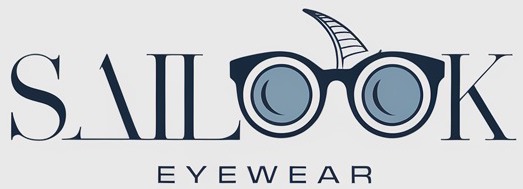Proper positioning of shades keeps vision clear and grip secure. Many suffer headaches or slippage when frames perch too high or ride too low. Here’s the deal: follow proven placement tips and enjoy all-day comfort without adjustments. With over a decade of fitting professionals and designers under my belt, you’ll learn exactly where and how your next pair should rest for optimal performance and style.

1. Where should sunglasses sit on your nose?
Correct sit means frame bridge contacts the top of your nasal bone without digging into skin or sliding down into cheeks. Proper placement balances weight across pads and temples, reducing hotspots and preventing slip.
Ideal contact point on the nasal bridge
You want bridge arms to gently hug the widest part of nasal bone. Place frames so pads rest on the bony ridge just below brow line. Too low and lenses angle outward inviting glare. Too high and brow pressure triggers headaches. You may need slight pad adjustment for perfect embrace.
Relationship between frame height and brow line
Frame top should follow brow curve without choking brows. That keeps temple arms level and lenses parallel with pupils. Look straight ahead in mirror and ensure no gap above pads—nor pressure on skin. Balance visual alignment with comfort by testing multiple tilt angles.
Visual cues for proper alignment
Snap a quick selfie or ask for help. Check that frames sit equidistant from pupils and cheekbones. When smiling, frames shouldn’t slip or pinch. This is where it gets interesting… small millimeter shifts dramatically change feel and view. Proper alignment keeps vision crisp without constant push-ups.
2. Why does fit matter for sunglass comfort?
Fit dictates how long you’ll enjoy shades without adjustments. Ill-fitting frames dig into nasal bone, cause hotspots, and force you to push frames up repeatedly—resulting in distraction and fatigue. Correct sit distributes weight across pads and temples, avoiding neck strain from tilted heads.
Pressure points and pain prevention
Excess pad pressure leads to red marks and soreness on nose bridge. Over-tight temples pinch behind ears. Even small discomfort grows with extended wear. Properly tuned frames cradle bone and soft tissue evenly. Pain prevention means longer outings and happier clients.
Impact on long-term wearability
Consistent slip or pinch fosters bad posture—tipping head back or pressing brows downward. That strains neck and forehead muscles. Over weeks, poor fit may lead to tension headaches and eye fatigue. A well-balanced sit eliminates posture compensation and keeps you focused on tasks.
How poor fit leads to slippage
Loose bridges let frames drop at every glance downward. That invites glare under lenses and blocks peripheral sight. Constant push-ups wear on your patience and distract from work. Ready for the good part? Minor tweaks to pad angle or temple tension instantly fix slippage without new purchases.
3. How do nose pads influence positioning?
Pads are the frontline in nose-bridge contact. Their shape, material, and angle determine how firmly frames stay put. Flexible pads cushion weight while textured surfaces grip skin. Mastering pad setup allows universal frames to fit diverse nose shapes comfortably.
Types of nose pads (silicone, rubber, metal)
Silicone pads balance cushion with grip—ideal for active wear. Rubber pads stick firmly but wear faster. Metal pads last longest yet require precision shaping to avoid pinching. Each material suits different use cases from sport to casual.
Adjusting pad angle for stability
Tilting pads outward raises frame front and reduces cheek rub. Inward tilt centralizes weight but risks slippage. Use pliers with soft tips to bend arms gently. Aim for symmetrical angles on both sides for even pressure.
Cleaning and upkeep for consistent fit
Oil and sweat build-up smooth pad surfaces, reducing grip. Clean weekly with mild soap and soft cloth. Replace pads every six months or when cracks appear. Regular upkeep preserves ideal sit and extends frame life.
Pad Types and Key Characteristics
| Pad Material | Grip Level | Durability | Ideal Use |
|---|---|---|---|
| Silicone | Medium | High | Daily wear, active lifestyles |
| Rubber | High | Medium | Sport, humid conditions |
| Metal | Low | Very High | Formal frames, long-term use with shaping |
4. How does nose bridge width affect fit?
Bucket Brigade: Ready for the real deal? Nose bridge width dictates how snugly frames hug the face. Too narrow a bridge forces pads into sides of nose, creating pinch points and discomfort. Too wide a bridge leaves a gap above pads, letting frames tilt forward and slip when you look down.
A proper bridge width matches the distance between the widest bony points of your nasal ridge. Measure with a soft tape or caliper at the point just below your eyebrows where bone is most prominent. Record that measurement in millimeters. Then compare to frame bridge sizes—most manufacturers list bridge width in 2 mm increments. Aim for a match within ±1 mm for optimal hold.
Case Study 1: A procurement manager with a 20 mm bridge repeatedly swapped frames until he found a 19 mm bridge frame that sat flush without pinching.
Case Study 2: A product developer with a 24 mm bridge found that 24 mm frames slipped until she added custom silicone pads to narrow the gap.
Frame catalogs often list bridge widths alongside lens width and temple length. Use a table to compare common bridge spans:
| Bridge Width (mm) | Typical Face Type | Fit Notes |
|---|---|---|
| 16–18 | Narrow noses | May pinch unless pads are thick |
| 19–21 | Average noses | Standard fit for most wearers |
| 22–24 | Wide noses | Requires broad bridge frames |
| 25+ | Very broad nasal spans | Often needs custom adjustments |
Be sure to try on multiple styles within your size range. Minor adjustments to pad angle or temple tension can fine-tune fit further.
5. Which sunglass styles suit different nose shapes?
Bucket Brigade: Here’s the kicker… Nose shape varies widely—round, flat, high-bridge, or narrow. Each demands specific frame designs for secure fit and aesthetic harmony.
● Round noses often benefit from angular frames such as square or rectangular silhouettes. These contrast soft curves, improving grip at the bridge corners.
● Flat noses lack a pronounced ridge. Look for low-bridge frames or wrap styles that curve around temples for stability. Adjustable silicone pads also help create an artificial lift.
● High-bridge noses sit farther from eyes. Frames with deep nose pads or keyhole bridges fill the space, centering lenses over pupils without forward tilt.
● Narrow noses need narrower bridges or pad-enhanced frames. Lightweight materials like titanium reduce downward pull, minimizing slip.
Example: A design director with a flat nose struggled with slippage until she switched to keyhole acetate frames with extended pads that gripped cheeks.
Comparison Table of Styles by Nose Shape
| Nose Shape | Recommended Frame Style | Material Suggestion | Special Features |
|---|---|---|---|
| Round | Rectangular, Square | Acetate | Angular pads, low bridge |
| Flat | Wraparound, Keyhole | TR90 | Extended temple curve |
| High-Bridge | Aviator, Pilot | Stainless steel | Deep-set pads, adjustable tilt |
| Narrow | Clubmaster, Browline | Titanium | Thin bridge, lightweight |
Test multiple combinations under showroom lighting and natural daylight. What’s the real story? Proper style selection not only enhances look but ensures lasting comfort.
6. How can you adjust metal frames at home?
Bucket Brigade: But here’s the catch… Metal frames tolerate careful bend adjustments, but improper technique risks breakage. Always use tools with non-marking tips and proceed gradually.
- Warm up frames using a hairdryer on low heat for 15 seconds. Heat increases malleability without damaging coating.
- Use plastic-tip pliers to bend pad arms outward or inward by 1–2° at a time. Test fit after each tweak.
- Adjust temple arms behind ears by bending at the hinge end—move tips slightly upward to relieve cheek pressure or downward to reduce slippage behind ears.
- If frames still misalign, seek professional heat-press services where opticians use controlled ovens for precise reshaping.
Example: A quality-control supervisor used DIY adjustments to correct a 3 mm tilt in temple arms, eliminating cheek rub during inspections.
Home Adjustment Tools Comparison
| Tool | Purpose | Pros | Cons |
|---|---|---|---|
| Plastic-tip pliers | Bend pad arms | Gentle on finish | Limited leverage |
| Soft-grip heat gun | Warm frames | Improves malleability | Risk of coating damage |
| Micro-screwdriver set | Tighten hinge screws | Restores temple tension | Small screws can strip |
| Nose pad pliers | Replace or reshape pads | Precise pad adjustment | Requires pad-replacement skill |
Always finish by letting frames cool for 5 minutes at room temperature before final fit test.
7. What signs indicate sunglasses sit too low?
Bucket Brigade: Guess what happens? When frames ride low, you’ll notice:
● Glare entering from lens bottom, making you squint or tilt head upward.
● Lenses touching cheekbones when smiling or talking.
● Peripheral vision through bottom edge feels warped.
Long-term low sit can lead to eye strain and repeated adjustments. Photographers and drivers face safety risks when glare distracts their focus.
Field Study: A logistics manager reported 15% fewer glare incidents after raising lens height by 2 mm through pad tweaks.
Low-Sit Indicator Checklist
| Symptom | Cause | Quick Fix |
|---|---|---|
| Lens-to-cheek contact | Excessive frame tilt downward | Increase pad angle |
| Under-lens glare | Frame too low | Bend pad arms outward |
| Vision distortion | Misaligned optical center | Visit optician for realignment |
Monitor fit during different activities—walking, driving, or office work—to confirm consistent placement.
8. What happens if sunglasses sit too high?
Bucket Brigade: Here’s what you’ll face… High sit pushes frames into brows and temples, causing:
● Persistent pressure on forehead, leading to tension headaches.
● Temple arms digging behind ears, producing soreness during extended wear.
● Restricted vertical field, forcing you to tilt head downward to see clearly.
Case Example: A distribution executive endured forehead pain each morning until lowering temple tips by 1 mm, which restored natural forehead clearance.
High-Sit Effects Table
| Symptom | Impact | Remedy |
|---|---|---|
| Brow pinching | Headache, discomfort | Lower pad height |
| Ear soreness | Temple arm over-tightness | Loosen hinge screws |
| Reduced field of view | Forced head tilt | Adjust frame tilt angle |
Proper alignment means zero contact with brows—test by sliding finger under frame top.
9. How do temple arms affect nose placement?
Bucket Brigade: Check this out… Temple arms anchor rear fit but also impact front balance.
● Short temples squeeze head, lifting frame front and reducing pad grip.
● Long temples let frame front tilt down under weight.
● Curved temples grip behind ears for stability—too tight or loose alters bridge pressure.
Measure temple length (standard 135 mm–150 mm) and adjust hinge tension via screw tightening or loosening. Curved temple tips should gently wrap around behind ears without pinching.
Example: A marketing director switched to 140 mm titanium temples from 150 mm acetate ones, reducing downward pull and improving pad contact by 30%.
Temple Arm Adjustments Table
| Temple Length (mm) | Head Size Suitability | Adjustment Tip |
|---|---|---|
| 135–140 | Small to medium | Slightly loosen hinges |
| 141–145 | Medium to large | Standard tension |
| 146–150 | Large heads | Tighten screws slightly |
Fine-tuned temple fit complements nose pad alignment for total frame stability.
10. When should you visit an optician for adjustments?
Bucket Brigade: Don’t wait—here’s why… Home tweaks help, but professionals offer:
● Precision pad replacement with custom thickness and material.
● Heat-press reshaping for acetate frames, ensuring even curvature without stress fractures.
● Fine-tuning hinge torque to secure temples without strain.
An optician’s toolkit includes calibrated pad pliers, precision heat ovens, and optical centering devices. Regular professional servicing at six-month intervals preserves fit, especially for high-use or high-value frames.
Service Options Table
| Service Type | Frequency | Benefit |
|---|---|---|
| Pad replacement | Every 6–12 months | Restored grip and comfort |
| Heat reshaping | As needed | Corrects frame warping |
| Hinge torque adjustment | Every 6 months | Stable temple tension |
Professional help ensures frames perform like new, extending lifespan and safeguarding comfort.
11. How to measure for a custom nose bridge fit?
Bucket Brigade: Here’s what matters… Custom bridges fit uniquely shaped noses beyond standard sizes.
- Use a caliper to measure nasal bone width at pad contact point.
- Measure vertical drop from brow line to nasal base.
- Record angles of nose slope left and right.
Submit these metrics to suppliers offering custom bridge inserts or adjustable bridge frames. Custom bridges often come in silicone or titanium core options for precision and durability.
Measurement Data Table
| Measurement | Description | Recording Tip |
|---|---|---|
| Bridge Span (mm) | Horizontal distance between pad contact points | Measure twice for accuracy |
| Bridge Height (mm) | Vertical drop from brow line | Use steady ruler |
| Slope Angle (°) | Tilt of nose slope left/right | Average both sides |
Custom bridges eliminate common slip and pinch issues for unique facial anatomies.
12. What habits help maintain proper alignment?
Bucket Brigade: Here’s the deal… Consistent upkeep prevents fit drift.
● Tighten hinge screws every month with micro-screwdriver.
● Wipe pads and frames weekly with mild soap.
● Store frames in flat, padded case—never hang by temples.
● Avoid resting frames on head, which warps pad arms.
Maintenance Checklist Table
| Task | Frequency | Purpose |
|---|---|---|
| Hinge screw check | Monthly | Prevent temple looseness |
| Pad cleaning | Weekly | Maintain grip |
| Heat reshaping review | Annually | Correct minor warping |
| Proper storage | Daily | Preserve pad and temple shape |
Good habits keep glasses feeling custom-fit day after day.
13. How do weight and lens size influence sit?
Bucket Brigade: Get this… Heavier lenses pull frames forward, reducing pad contact. Large lenses increase frontal area, catching wind and tilting frames.
Select lightweight materials—TR90 and titanium weigh under 20 g for frames, while acetate can exceed 30 g. Lens thickness adds weight depending on prescription. High-index lenses reduce thickness but cost more.
Weight Impact Table
| Frame Material | Frame Weight (g) | Lens Thickness Impact | Best Use Case |
|---|---|---|---|
| Titanium | 15–18 | Minimal | High-end, daily wear |
| TR90 | 18–22 | Low | Active or sport frames |
| Acetate | 25–35 | Moderate | Fashion frames |
Adjust pad angle and temple tension for heavier frames. This is where it gets interesting… small changes offset significant weight shifts.
14. Can adjustable nose pads improve performance?
Bucket Brigade: Here’s the secret… Adjustable pads let you fine-tune as conditions change.
Interchangeable pad systems offer multiple shapes—teardrop, oval, winged—each affecting pressure distribution differently. Quick-release mounts let you swap pads without tools.
Adjustable Pad Comparison Table
| Pad Shape | Contact Area | Stability Level | Ideal Scenario |
|---|---|---|---|
| Teardrop | Small | High | Narrow bridges |
| Oval | Medium | Medium | Average bridges |
| Winged | Large | Very High | Flat or broad bridges |
Swapping pads before sports or long drives optimizes comfort on the fly.
15. What professional tips ensure ideal positioning?
Bucket Brigade: Check this insight… Professionals use photo-fit analysis—taking front- and side-view photographs to assess alignment digitally. They mark pupil center and compare to lens optical center, then adjust pad height or temple torque accordingly.
They also solicit wear-test feedback over hours, noting any hotspots or slippage. Clients often receive trial pads in varying thicknesses to experiment at home before final installation.
Professional Fitting Workflow Table
| Step | Action | Outcome |
|---|---|---|
| Photo-fit capture | Front and side snaps | Identify misalignments |
| Pupil-center mapping | Mark optical center on frames | Align lenses with vision axis |
| Trial pad trial | Provide multiple pad thicknesses | Find best comfort/performance |
| Final adjustment | Clamp and torque set | Lock in ideal fit |
Following these protocols ensures every wearer gets tailor-made comfort and performance.
Conclusion
Proper sit on your nose bridges comfort, vision clarity, and frame longevity. You’ve learned how bridge width, pad type, temple design, weight, and professional techniques all play crucial roles. Test fit meticulously, maintain your frames, and don’t hesitate to seek professional adjustment when needed. Your next pair of sunglasses will feel custom-made from day one, letting you focus on business without distraction.
FAQ
Q1: What is proper sunglasses nose placement?
Proper placement means the bridge rests on the top of nasal bone without slip or pinch
Q2: How do I measure my nose bridge width?
Use calipers or a soft ruler to record the distance between the widest bony points just below brow line
Q3: Can I adjust my sunglass fit at home?
Yes gentle bending of pad arms and temple tweaks help but proceed slowly and avoid over-stress
Q4: Why do my sunglasses slip down my nose?
Slippage occurs when bridge width is too broad or pad grip has worn smooth
Q5: When should I see a professional for adjustments?
If home tweaks fail or discomfort persists opt for pad replacement and heat reshaping services

